
How to Use Water Pump: Examples, Pinouts, and Specs
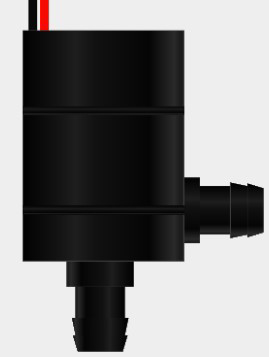
 Design with Water Pump in Cirkit Designer
Design with Water Pump in Cirkit DesignerIntroduction
The water pump is an essential electronic component used to move water from one place to another. It is commonly employed in various applications such as irrigation systems, water supply networks, and cooling systems. This documentation provides a comprehensive guide to understanding, using, and troubleshooting a water pump in electronic circuits.
Explore Projects Built with Water Pump
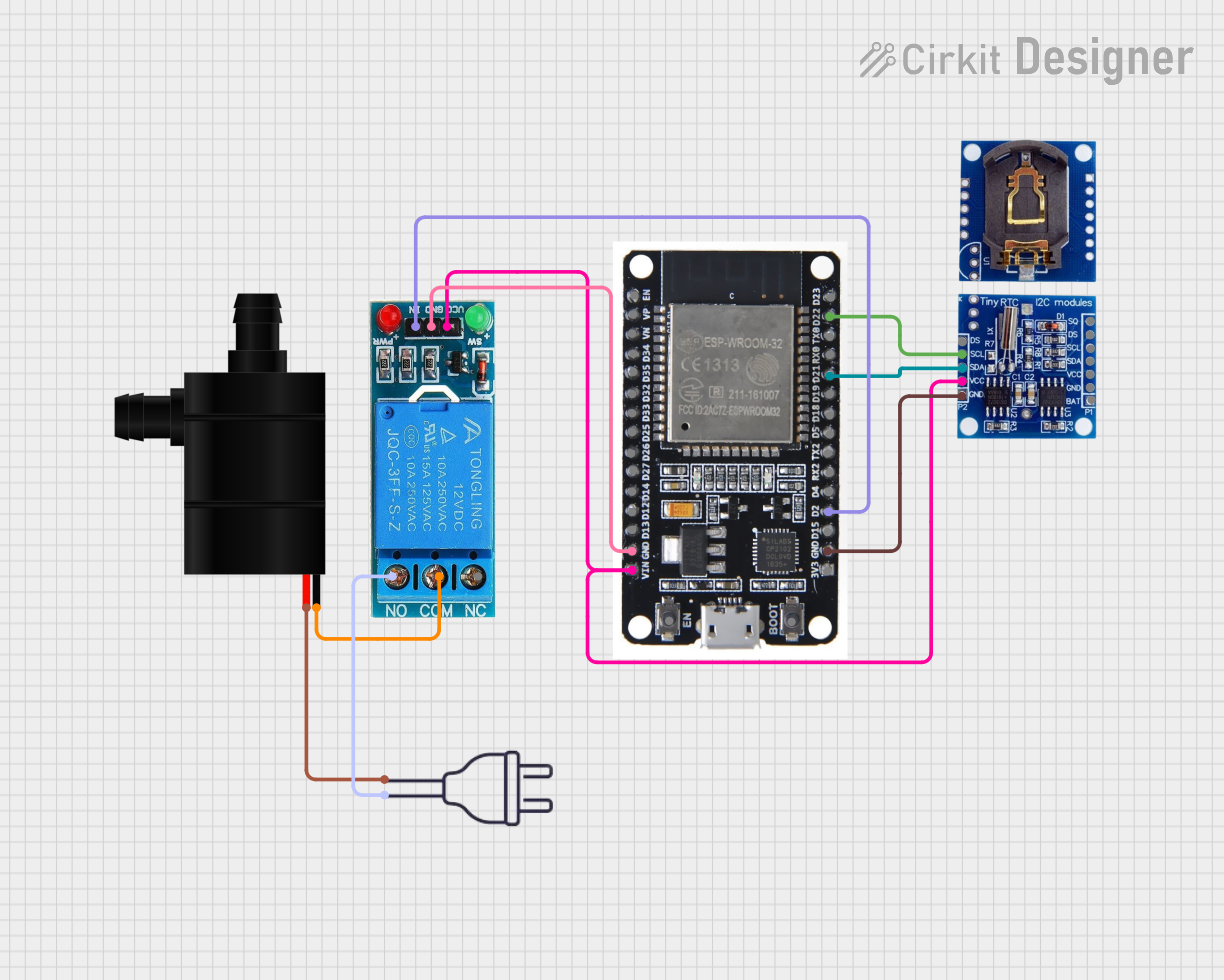
 Open Project in Cirkit Designer
Open Project in Cirkit Designer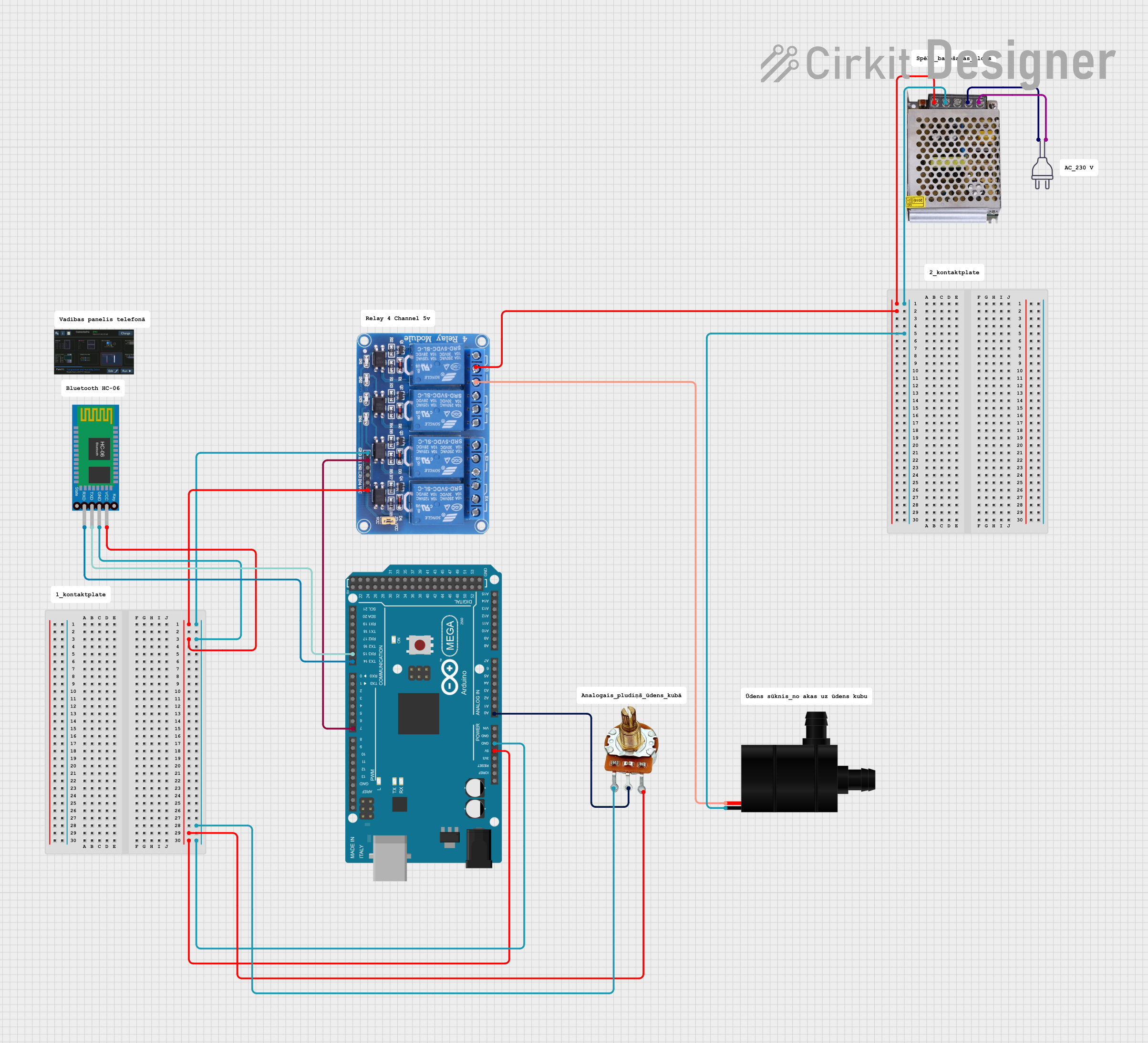
 Open Project in Cirkit Designer
Open Project in Cirkit Designer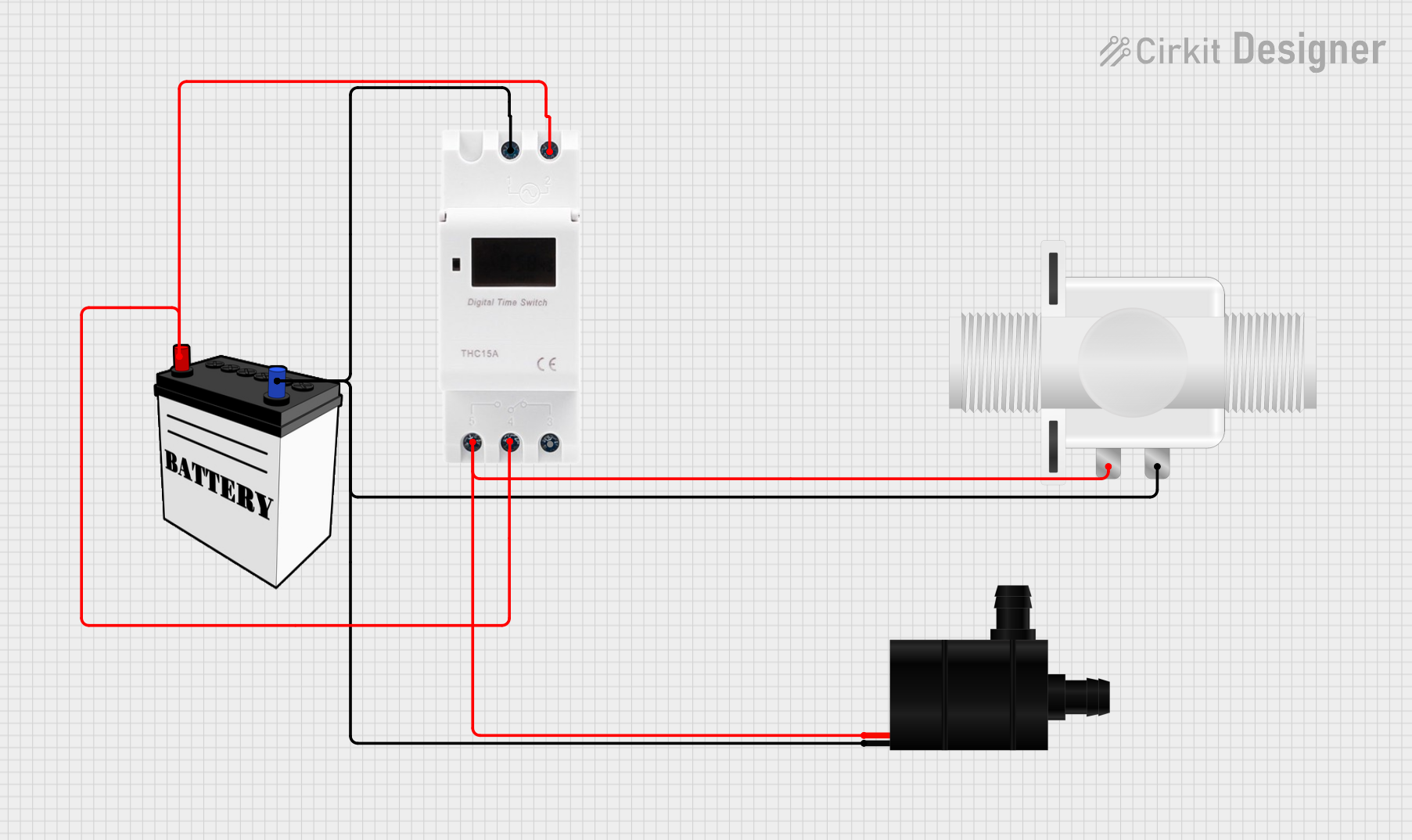
 Open Project in Cirkit Designer
Open Project in Cirkit Designer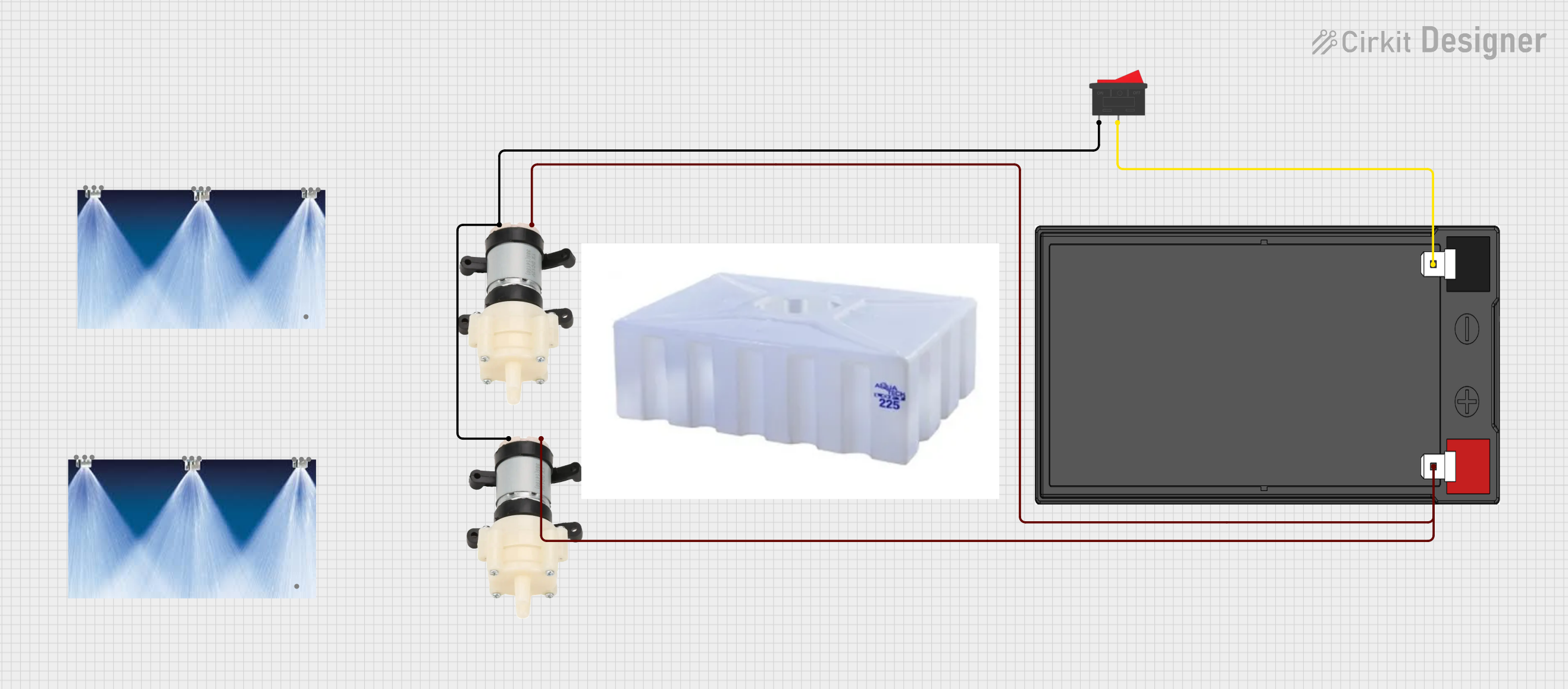
 Open Project in Cirkit Designer
Open Project in Cirkit DesignerExplore Projects Built with Water Pump

 Open Project in Cirkit Designer
Open Project in Cirkit Designer
 Open Project in Cirkit Designer
Open Project in Cirkit Designer
 Open Project in Cirkit Designer
Open Project in Cirkit Designer
 Open Project in Cirkit Designer
Open Project in Cirkit DesignerTechnical Specifications
Key Technical Details
| Parameter | Value |
|---|---|
| Operating Voltage | 6V - 12V |
| Operating Current | 0.5A - 1.5A |
| Power Rating | 3W - 18W |
| Flow Rate | 80 - 120 L/H |
| Maximum Lift | 1.5 - 2.5 meters |
| Inlet/Outlet Size | 5mm - 8mm |
Pin Configuration and Descriptions
| Pin Number | Pin Name | Description |
|---|---|---|
| 1 | VCC | Power supply (6V - 12V) |
| 2 | GND | Ground |
| 3 | IN | Control signal input (PWM compatible) |
Usage Instructions
How to Use the Component in a Circuit
- Power Supply: Connect the VCC pin to a power source within the operating voltage range (6V - 12V). Ensure the power supply can provide sufficient current (0.5A - 1.5A) for the pump's operation.
- Ground Connection: Connect the GND pin to the ground of the circuit.
- Control Signal: Use a microcontroller (e.g., Arduino UNO) to send a control signal to the IN pin. This signal can be a simple HIGH/LOW digital signal or a PWM signal to control the pump's speed.
Important Considerations and Best Practices
- Power Supply: Ensure the power supply is stable and within the specified voltage range to avoid damaging the pump.
- Heat Dissipation: The pump may generate heat during operation. Ensure proper ventilation or cooling to prevent overheating.
- Waterproofing: If the pump is used in a wet environment, ensure all electrical connections are properly insulated to prevent short circuits.
- Flow Rate Control: Use PWM signals to control the flow rate of the pump for precise water management.
Example Circuit with Arduino UNO
// Example code to control a water pump using Arduino UNO
const int pumpPin = 9; // Pin connected to the IN pin of the water pump
void setup() {
pinMode(pumpPin, OUTPUT); // Set the pump pin as an output
}
void loop() {
digitalWrite(pumpPin, HIGH); // Turn the pump on
delay(5000); // Keep the pump on for 5 seconds
digitalWrite(pumpPin, LOW); // Turn the pump off
delay(5000); // Keep the pump off for 5 seconds
}
Troubleshooting and FAQs
Common Issues Users Might Face
Pump Not Turning On:
- Solution: Check the power supply and ensure it is within the specified voltage range. Verify all connections are secure.
Low Flow Rate:
- Solution: Ensure the inlet and outlet are not blocked. Check for any kinks or obstructions in the tubing.
Overheating:
- Solution: Ensure proper ventilation and cooling. Reduce the operating time or use PWM to control the pump speed.
Noisy Operation:
- Solution: Check for any loose parts or debris inside the pump. Ensure the pump is mounted securely.
FAQs
Q1: Can I use the water pump with a battery?
- A1: Yes, you can use a battery within the specified voltage range (6V - 12V). Ensure the battery can provide sufficient current for the pump's operation.
Q2: How do I control the flow rate of the pump?
- A2: You can use PWM signals from a microcontroller (e.g., Arduino UNO) to control the flow rate of the pump.
Q3: Is the water pump waterproof?
- A3: The pump itself is designed to handle water, but ensure all electrical connections are properly insulated to prevent short circuits.
Q4: Can I use the pump for other liquids besides water?
- A4: The pump is primarily designed for water. Using it with other liquids may affect its performance and longevity.
This documentation aims to provide a thorough understanding of the water pump, its technical specifications, usage instructions, and troubleshooting tips. Whether you are a beginner or an experienced user, this guide will help you effectively integrate the water pump into your projects.